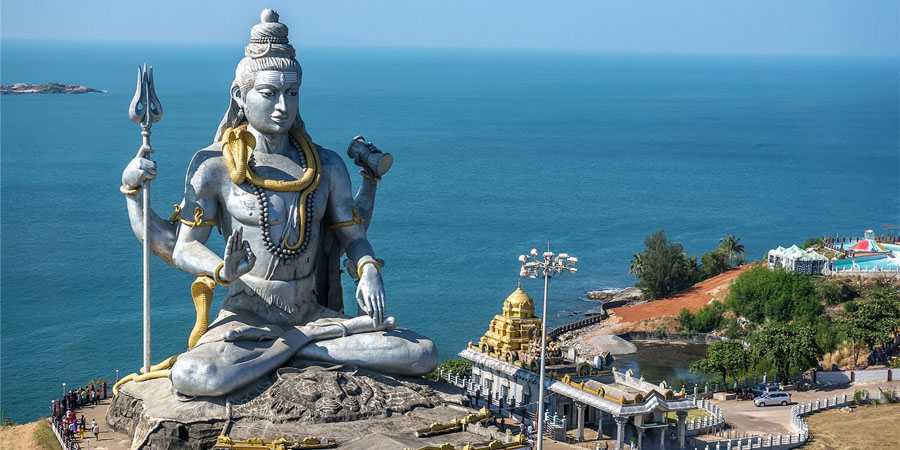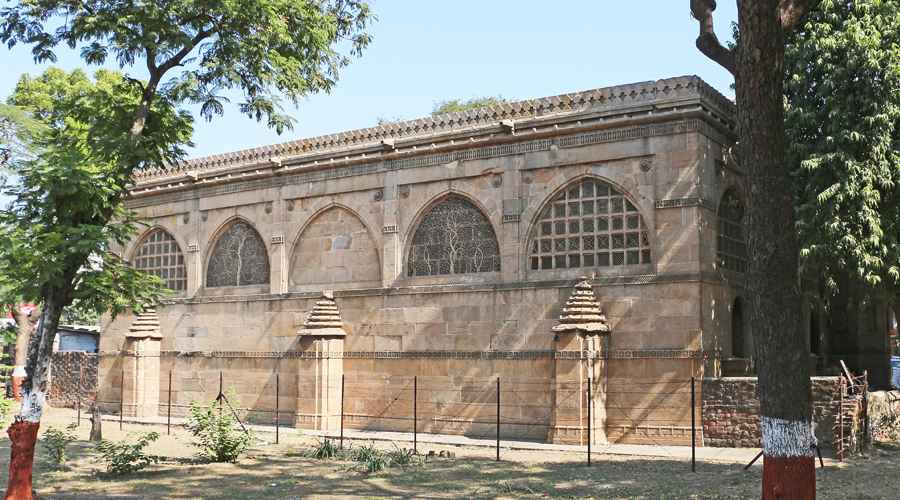The Brihadeeswara Temple, also known as Peruvudaiyar Kovil or the “Big Temple,” stands majestically in the historic city of Thanjavur, Tamil Nadu. This awe-inspiring monument, built over a thousand years ago, is one of the finest examples of Dravidian temple architecture and remains an enduring symbol of the artistic, cultural, and engineering brilliance of the Chola dynasty. Declared a UNESCO World Heritage Site under the “Great Living Chola Temples” grouping, the Brihadeeswara Temple continues to draw scholars, pilgrims, and travelers from all over the world.
Historical Background
The temple was constructed by Rajaraja Chola I, one of the greatest rulers of the Chola Empire, and was completed in 1010 CE. This period represented the zenith of the Cholas, a time when their dominance extended across South India, Sri Lanka, and parts of Southeast Asia. Rajaraja Chola envisioned a temple not only as a place of worship but also as a monument that would showcase the grandeur and power of his empire.
Dedicated to Lord Shiva, the temple came to be known as Brihadeeswara, meaning “the Great Lord.” It served both as a spiritual center and as a testament to the Chola dynasty’s devotion, wealth, and artistic innovation.
Architectural Grandeur
The Brihadeeswara Temple is a masterpiece of Dravidian architecture, marked by its monumental scale, balanced proportions, and intricate detailing.
Towering Vimana:
The most defining feature is the vimana (sanctum tower), which soars to a height of around 66 meters (216 feet), making it one of the tallest temple towers in the world. The tower is crowned with a massive monolithic granite capstone weighing about 80 tons, an engineering feat that continues to baffle historians.
Main Shrine and Sanctum:
The sanctum houses a massive lingam of Lord Shiva, symbolizing cosmic energy and creation. The inner chambers are designed to evoke spiritual intimacy while inspiring awe with their scale.
Nandi Mandapa:
In front of the main shrine stands a colossal statue of Nandi, the sacred bull of Shiva, carved from a single stone. Weighing approximately 25 tons and measuring nearly 12 feet high and 20 feet long, this Nandi is considered one of the largest in India.
Sculptural Brilliance:
The temple’s walls are adorned with exquisite frescoes, inscriptions, and sculptures depicting scenes from Hindu mythology, Chola history, and daily life from the era. The precision of the carvings, combined with their aesthetic elegance, reflects the mastery of Chola artisans.
Use of Granite:
One of the most remarkable aspects of the temple is its construction almost entirely from granite—a stone not locally available. Scholars still debate how such massive blocks of granite were transported and assembled without modern technology, but it remains a testament to Chola engineering.
Cultural and Spiritual Significance
The Brihadeeswara Temple goes beyond being a marvel of architecture; it is a spiritual nucleus for millions of devotees. It symbolizes the deep-rooted traditions of Shaivism in Tamil Nadu and serves as a place of continuous worship for more than a thousand years.
Culturally, the temple functioned as more than a religious site. It was also a hub of learning, art, and music, hosting dancers, scholars, and musicians under royal patronage. The temple inscriptions provide valuable records of donations made by various patrons, administrative details, and the organization of temple life, giving historians insight into Chola society.
Inscriptions and Historical Records
The walls of the temple carry over 600 inscriptions, making it one of the most important archives of the Chola period. These inscriptions detail not only the construction and consecration of the temple but also list grants of land, gold, and livestock, thereby illustrating the temple’s role in the economic structure of the time.
Many inscriptions also record contributions from dancers, musicians, and artisans, highlighting how temples served as cultural centers that integrated religious worship with artistic expression.
UNESCO World Heritage Recognition
In 1987, the Brihadeeswara Temple was inscribed as a UNESCO World Heritage Site as part of the Great Living Chola Temples, along with the Gangaikonda Cholapuram Temple and the Airavatesvara Temple at Darasuram. The recognition underscores the universal significance of Chola art and ensures that the temple continues to receive global attention as a priceless heritage monument.
Festivals and Rituals
The temple is alive with rituals throughout the year. Major festivals like Maha Shivaratri draw thousands of devotees, who converge for all-night prayers and cultural performances. The temple also hosts elaborate wedding-like celebrations for Lord Shiva and his consort, bringing together traditions of devotion, music, and dance. The daily worship rituals continue unbroken, reinforcing the temple’s status as a “living temple” even after a millennium.
Preservation and Legacy
Over the centuries, the Brihadeeswara Temple has survived invasions, natural calamities, and political transitions, standing as a resilient monument of faith and artistry. Recent conservation efforts led by the Tamil Nadu government and the Archaeological Survey of India ensure that the temple and its intricate frescoes, sculptures, and inscriptions are maintained for future generations.
The temple’s legacy extends beyond Tamil Nadu. It has inspired temple architecture across South and Southeast Asia, particularly during the period of Chola naval expeditions that spread cultural influence abroad.
Conclusion
The Brihadeeswara Temple in Thanjavur is not just a shrine to Lord Shiva but a celebration of human creativity, devotion, and engineering. It reflects the power and vision of the Cholas, while also standing as a timeless testament to Tamil culture. Over a thousand years after its completion, the temple continues to awe devotees and visitors with its architectural harmony, spiritual energy, and historical richness.
As one gazes upon the towering vimana, the giant Nandi, and the countless sculptures that adorn its walls, it becomes clear that Brihadeeswara is much more than a temple—it is a living legacy of India’s golden era, an eternal flame of art, spirituality, and history.



